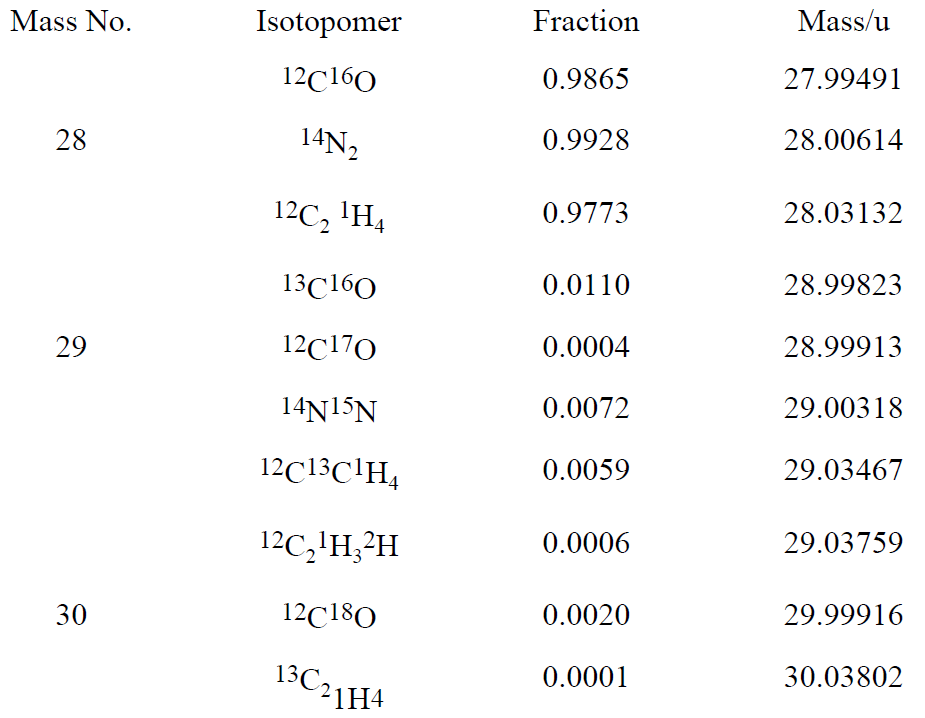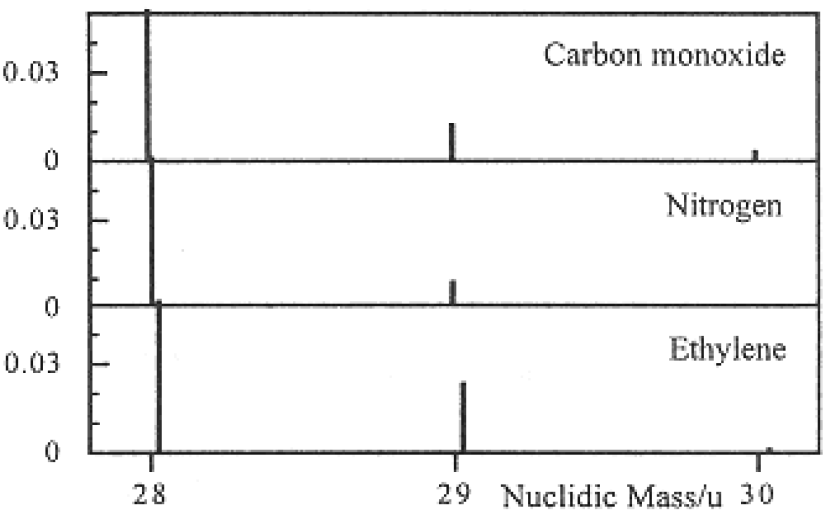
Chemical Formulas from Mass Spectrometry
 المؤلف:
Jerome L. Rosenberg and Lawrence M. Epstein
المؤلف:
Jerome L. Rosenberg and Lawrence M. Epstein
 المصدر:
College Chemistry
المصدر:
College Chemistry
 الجزء والصفحة:
p 17
الجزء والصفحة:
p 17
 24-6-2017
24-6-2017
 2258
2258
Chemical Formulas from Mass Spectrometry
The molecular mass of a compound is the average mass (in u) of a molecule, weighted among the various isotopic forms (isotopomers) of the different component elements. A nuclidic molecular mass may be defined for a molecule made up of particular nuclides by adding nuclidic atomic masses in the same way that the molecular mass is computed from average atomic masses.
A mass spectrometer is an instrument that separates particles by mass and measures their individual relative masses. If a nuclidic mass of an unknown compound is known with great precision from mass spectrometry, the exact molecular formula can often be deduced directly from this information without resort to a quantitative chemical analysis.
Example 1
Consider carbon monoxide, CO, dinitrogen, N2, and ethylene, C2H4. The masses and fractional abundances of some isotopic forms of these molecules are listed in Table 1.1 (isotopic forms not listed have abundances less than 0.0001 or 0.01%). Since 12C, 16O, 14N, and 1H are by far the most abundant isotopes of C, O, N, and H, a particle of mass number 28 will be detected in all three cases. With a mass spectrum, Figure 1-1, the three gases can be distinguished on the basis of their nuclidic masses. The mass 29 and 30 satellites provide confirmation of the assignment.
Table 1.1


Figure 1-1. Mass spectra of CO, N2, and C2H4. Note that the major peak at mass 28 has been truncated.
Example 2
Find the formula of an organic compound whose dominant nuclidic species has a precise nuclidic molecular mass of 44.025 u, given that no other elements than C, H, O, and N are present and only 12C, 1H, 16O, and 14N are involved.
Considering all possible combinations of C, H, O, and N, we find six molecular formulas with nuclidic molecular masses of about 44. These are listed in Table 1.2 with nuclidic molecular masses.
Table 1.2

When these nuclidic masses are compared with the experimental value, 44.025 u, C2H4O is the only formula that fits the data within the claimed precision; so this must be the formula of the compound.
 الاكثر قراءة في مواضيع عامة في الكيمياء التحليلية
الاكثر قراءة في مواضيع عامة في الكيمياء التحليلية
 اخر الاخبار
اخر الاخبار
اخبار العتبة العباسية المقدسة


